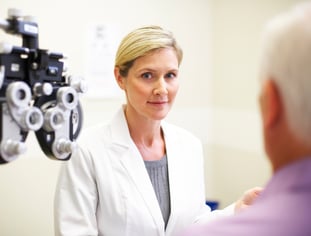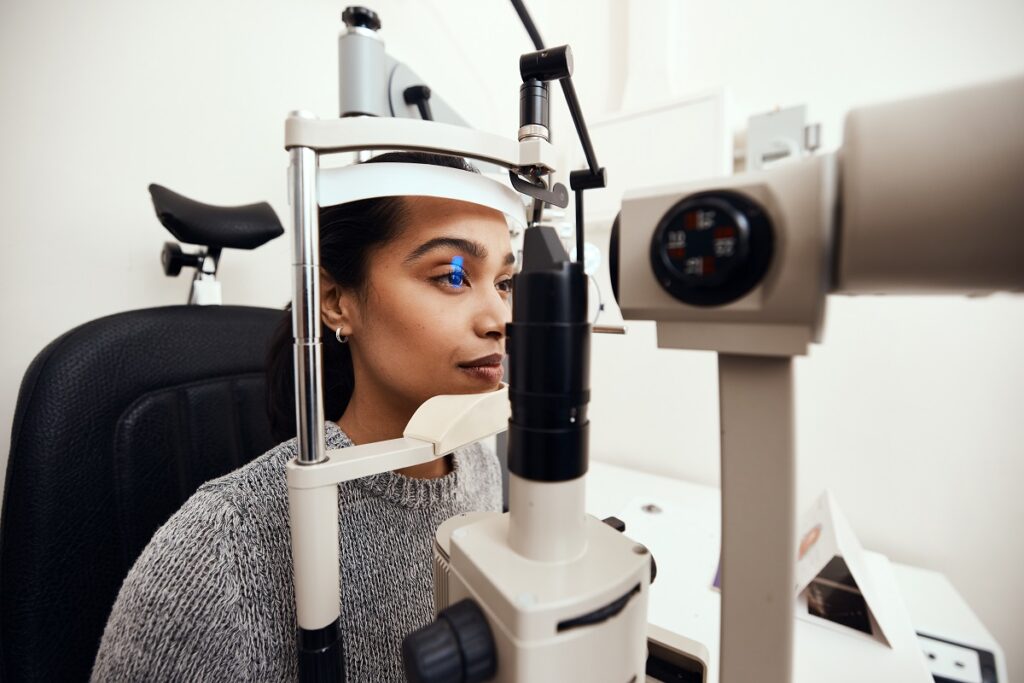Discovering the most up to date Technological Advancements in Optometry and What They Mean for Eye Doctors
From the precision of Optical Coherence Tomography to the nuanced insights supplied by AI-driven analysis tools, these developments are establishing brand-new standards in client assessment and therapy. As these innovations penetrate the practice, optometrists are encountered with the difficulty of welcoming these tools to boost patient outcomes.
Developments in Diagnostic Equipment
Advancing the area of optometry, innovations in analysis devices have revolutionized the way eye treatment specialists examine and identify visual impairments and eye problems. The previous years has observed considerable technical improvements, making it possible for more extensive and exact evaluations.
One more trick advancement is the introduction of innovative corneal topography systems, which map the surface curvature of the cornea with precision. These devices are especially beneficial for suitable call lenses and identifying corneal disorders. Electronic retinal imaging has transformed conventional ophthalmoscopy, offering comprehensive, scenic sights of the retina that facilitate complete aesthetic examinations.
The advancement of wavefront aberrometry has actually also been essential, enabling the evaluation of refractive mistakes with unmatched accuracy (Eye Doctor Optometrist). This technology assists in customizing restorative lenses and improving medical end results for refractive surgical procedures. Jointly, these diagnostic advancements empower optometrists to deliver premium client care, guaranteeing early treatment and tailored therapy methods, ultimately enhancing visual health outcomes
AI in Individual Monitoring
Structure on the structure of innovative diagnostic devices, the consolidation of expert system (AI) in patient management stands for a transformative jump for optometry. AI systems are increasingly employed to enhance performance, precision, and personalization in individual care. By analyzing huge amounts of information, AI can recognize patterns and anticipate possible eye conditions, allowing eye doctors to customize interventions much more efficiently. This capacity is important in handling chronic eye conditions such as glaucoma and diabetic person retinopathy, where early discovery and continual tracking are vital.
Additionally, AI-driven platforms assist in structured patient communications and administrative procedures. Automated organizing, digital consultations, and customized follow-up plans not only improve client satisfaction yet also enhance time management for experts. These systems can triage clients based upon the necessity of their conditions, making sure that those in crucial requirement obtain timely focus.
Furthermore, AI enhances decision-making by supplying eye doctors with evidence-based recommendations and treatment pathways. By integrating data from digital wellness documents, AI devices supply insights that inform medical decisions, reducing the danger of errors and enhancing patient end results. As AI proceeds to evolve, its duty in person administration will likely broaden, reshaping the landscape of optometric care.
Breakthroughs in Retinal Imaging
In the world of optometry, retinal imaging has seen amazing technological developments that are enhancing analysis abilities and patient treatment. Advancements such as Optical Comprehensibility Tomography (OCT) and fundus digital photography have revolutionized just how eye doctors evaluate the retina and envision.
Boosted imaging methods like OCT angiography are further refining analysis precision. This non-invasive technique maps blood flow in the retina, supplying vital insights into vascular wellness without the need for color shots. Furthermore, flexible optics innovation is being incorporated right into retinal imaging systems to deal with ocular aberrations, supplying unprecedented image quality. Such developments promote the identification of minute retinal changes that can indicate condition progression.
Furthermore, improvements in expert system are increasing retinal imaging by making it possible for automated evaluation of big datasets. These systems help eye doctors in recognizing patterns indicative of pathology, thus enhancing diagnostic accuracy and performance. Jointly, these innovations are transforming retinal imaging right into a cornerstone of modern-day eye treatment, boosting end results and increasing therapeutic possibilities.
Teleoptometry's Expanding Function
Teleoptometry is increasingly ending up being a crucial element of eye treatment, driven by advancements in data and analysis tools. As optometry accepts electronic improvement, teleoptometry promotes remote appointments, allowing eye doctors to expand their solutions beyond typical borders. This is especially valuable in underserved and country locations where accessibility to specialized eye care is typically minimal. By leveraging high-resolution video clip conferencing and progressed retinal imaging, optometrists can conduct comprehensive eye tests from afar, making certain prompt diagnosis and treatment.
The assimilation of expert system (AI) further boosts teleoptometry, allowing the analysis of aesthetic data and aiding in the discovery of ocular problems such as glaucoma and diabetic retinopathy. AI-powered formulas can quickly translate complex imaging information, offering eye doctors with valuable click over here insights that strengthen professional decision-making.
Additionally, teleoptometry supports connection of care via smooth combination with digital health and wellness documents (EHRs), permitting optometrists to keep extensive patient histories. This guarantees that individuals receive consistent and customized treatment even when speaking with various practitioners.
In spite of these benefits, obstacles remain, consisting of ensuring data protection and managing client assumptions. However, teleoptometry stands for a significant stride towards more easily accessible, efficient, and patient-centered eye care. As modern technology evolves, its role is positioned to expand even more.

Future Fads in Eye Treatment
A myriad of cutting-edge trends is readied to reshape the future of eye treatment, driven by technical advancements and the evolving demands of people. One considerable trend is the combination of expert system (AI) in diagnostics, which promises to improve the accuracy and effectiveness of eye examinations. AI algorithms can examine large amounts of information from retinal pictures, potentially finding conditions like diabetic retinopathy and glaucoma earlier than traditional methods.
Moreover, personalized medication is acquiring traction in optometry, with genetic screening notifying customized therapy strategies. This method intends to enhance patient outcomes by customizing interventions to specific genetic accounts. Wearable innovation, such as smart call lenses, is likewise coming up, supplying real-time tracking of intraocular stress or glucose levels, therefore supplying continuous understandings into eye and systemic wellness.
The adoption of enhanced my explanation truth (AR) and virtual fact (VIRTUAL REALITY) in training and person education and learning is another arising trend. These modern technologies offer immersive experiences that can improve understanding and abilities both for patients and eye doctors. As these fads develop, eye doctors should remain abreast of technological innovations to offer sophisticated care, making sure improved client end results and complete satisfaction in the vibrant landscape of eye care.
Conclusion

Collectively, these diagnostic improvements equip eye doctors to provide remarkable client Click Here care, making certain very early treatment and tailored therapy techniques, ultimately boosting aesthetic health end results.

As these innovations proceed to develop, optometrists should adapt and incorporate them into method, inevitably enhancing workflow efficiency and raising the criterion of eye treatment delivered to individuals.